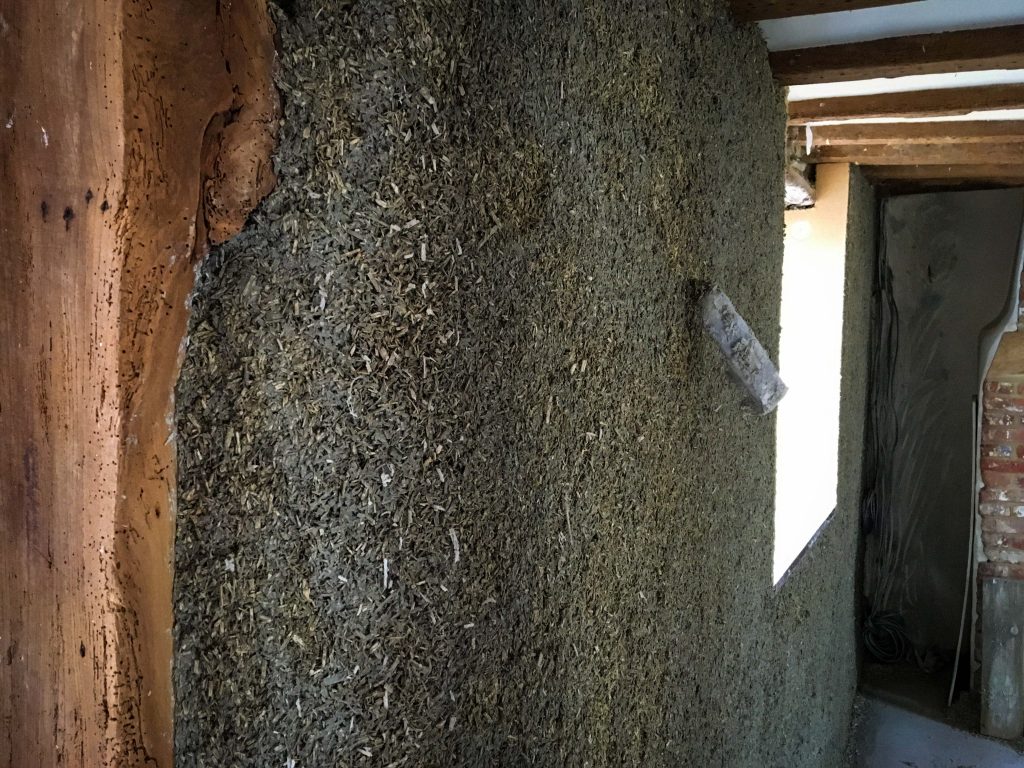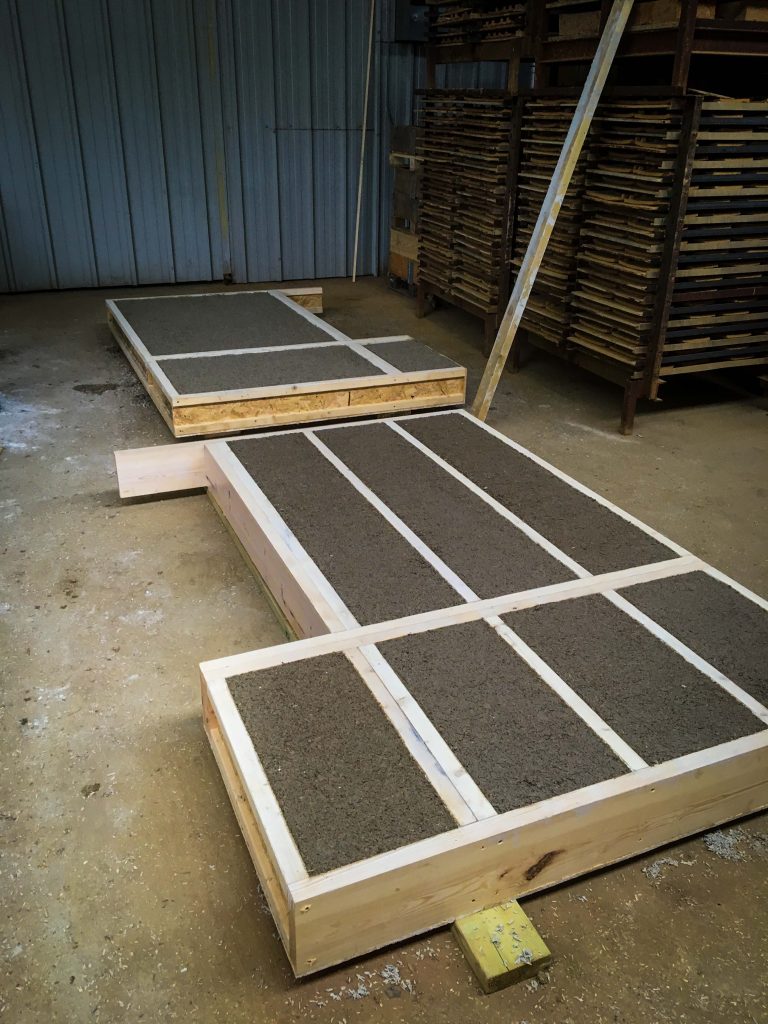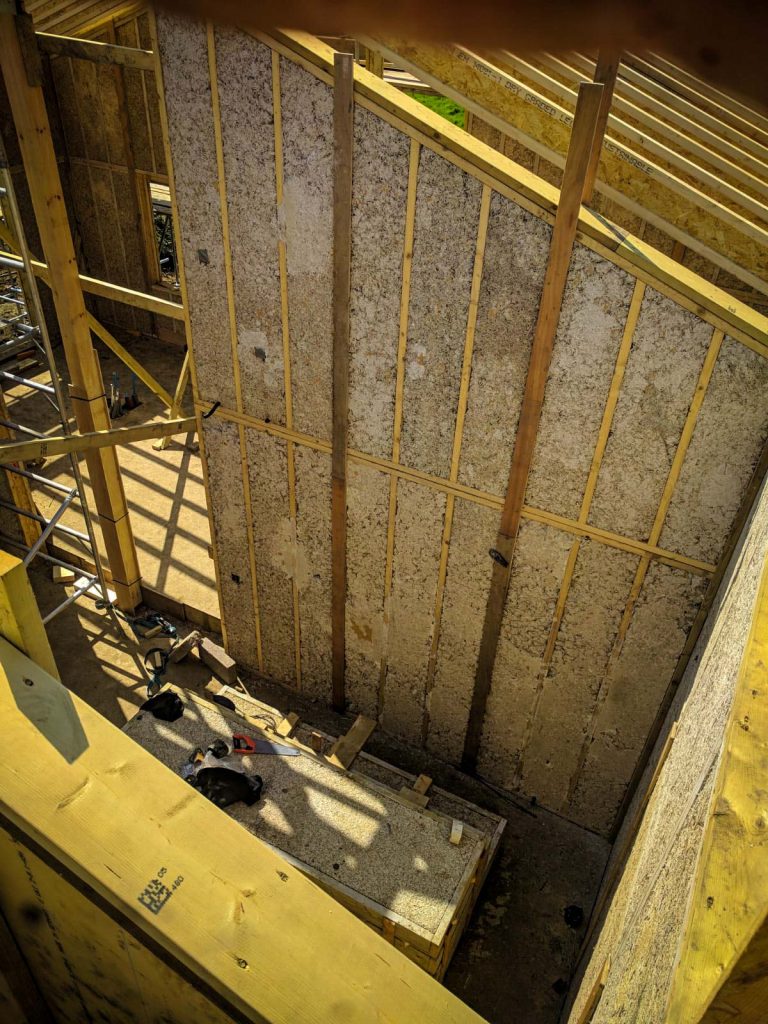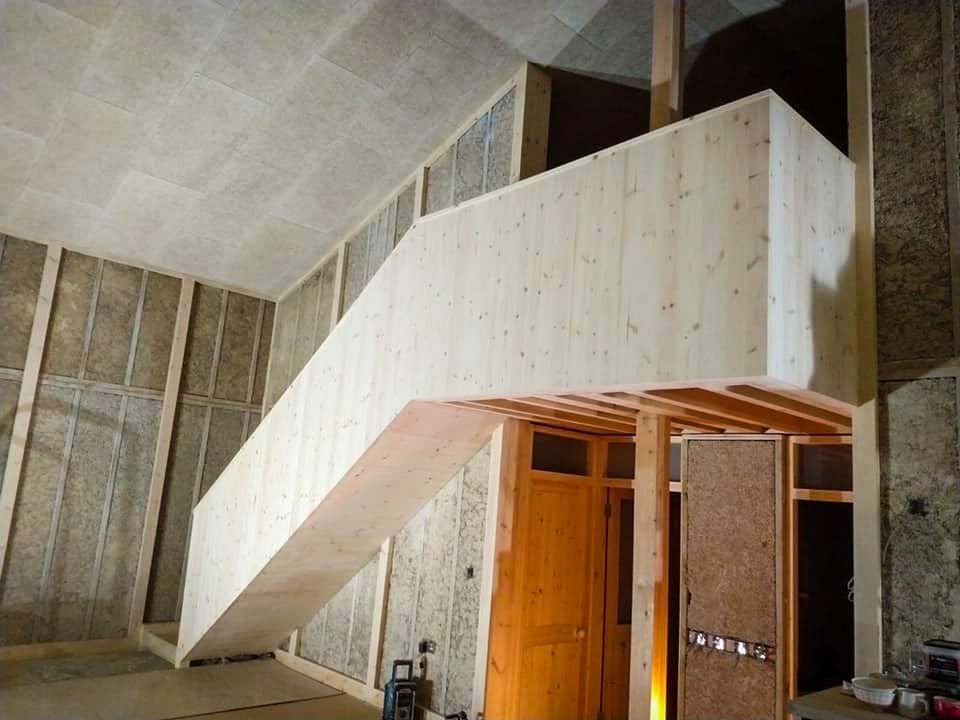Hemp has become something of a miracle ingredient over recent years with hemp-based products popping up across the market. And the construction industry has followed suit. With environmental, pollution-mitigating, and health benefits, what’s not to love?! We’ve given you a run-down of all you need to know about hemp.
The name may conjure up some mixed images, but this plant-based material could be “a powerful weapon in the fight against climate change”. With the imminent climate crisis and increasing urban populations, thinking outside the box, putting your prejudices behind you, and resourceful solutions are what’s required. And we think hemp could lend a helping hand.
Types of Hemp in Construction
Let’s begin by breaking down the myth around hemp as a plant. The hemp we refer to in terms of construction may be mistaken by some for the marijuana plant. There are in fact three basic types of the plant:
- Cannabis ruderalis – found in central and eastern Europe and Russia.
- Cannabis indica (Indian cannabis) – mostly forbidden to cultivate this as it contains high levels of psychoactive substances.
- Cannabis sativa (cannabis) – also known as technical hemp.
It is this final option, technical hemp, that we are talking about. Roughly ¾ of the plant is woody mass and the remainder is predominantly fibres. The process of growing hemp has many benefits for the surrounding land: it suppresses weed growth, has an anti-erosive effect on the soil, and removes poisonous substances and heavy metals from the soil.
Uses of Hemp in Construction
Hemp concrete or hempcrete: the most versatile of all construction materials from the cannabis plant. You can cast hempcrete in the same way as concrete without emitting all of the CO2 that you would with conventional concrete. By combining hemp hurds or hemp wood chips, water, and a natural binder such as lime, you create hempcrete which you can then use for the whole building envelope due to its mechanical strength and fire resistance.
Hempcrete can be found in many shapes and sizes:
- Sprayed hempcrete is sprayed onto or into a frame (usually a timber frame). This forms a building envelope with high levels of insulation, and thus consumes less energy. Not to mention the additional health and environmental benefits!
- When hemp is mixed with a binder which hardens into a solid, you can form hempcrete blocks which are a common application of hemp in construction. The blocks are simply built up in a frame with lime mortar. This is the simplest way to build with this material and as the blocks act as insulators, no further insulation is required. As the blocks are not load bearing, a timber frame is required for supporting roof and upper floor loads.
- By mixing hemp with a binder so that it hardens, hempcrete panels can also be made. These can be utilised for constructing a prefabricated house. i.e., much like an IKEA kit.
- Roof insulation can be made from hempcrete as cast, blocks, spray, loose fill, or a combination. A low-density mix is needed for the roof, but despite this, hemp still provides sufficient insulation.
- The mixture used for hempcrete floors has a higher density and can be applied in multiple ways, as mentioned above.
Hempcrete in the form of blocks, or applied by spray, cast, or trowel can be used as solid wall insulation.

Other types of hemp in construction:
- Honeycomb plaster is made by combining cannabis, lime, and sand that can then be applied in layers of up to 10cm. This has many benefits: it doesn’t contain any polluting substances; it is breathable and can help regulate air humidity. From an aesthetic point of view, it is natural looking and can be worked and shaped easily.
- Loose wool which is 100% hemp.
- Thermo-welded insulating panels which are usually 85% hemp fibre or a composition of 80% hemp fibre and hurds.
- Non-woven felts made from 100% hemp fibre which are perfect for acoustic insulation and quieting as they absorb or break up the vibrations.
- Particle boards for dry walls and ceilings which can be up to 100% hemp.
- Pellets for slabs that are made by pressing the dust produced during decortication – the process of removing the hard woody interior (hurd) from the softer outside layer of the stalk.
- Most natural materials used in construction will require a protective layer which can be provided by hemp oils and varnishes. They can be utilised as entirely natural products to coat timber buildings, furniture and even toys. The oil is highly resistant to mould and pests while still allowing the wood to breathe. As hemp oil is not reliably UV-resistant, the outside of structures should be treated differently. For example, with a hemp lacquer which provides the necessary protection from the sun.
- Hemp insulation panels which can replace conventional insulation materials, such as glass and rock wool.
Hemp Around the World
Whether it’s housing or warehouses, construction projects with hemp have been tried and tested all over the globe, from Europe to Australia, America to Japan, and even down to South Africa. China, Russia, Canada, and France are the world’s top hemp producing countries, with China alone covering a quarter of production. Despite this, hemp manufactured for construction processes is really only widely available in Europe, and even here progress is still to be made. Along with growing conditions, another reason for this could be the reputation and connotations the cannabis plant has which is constraining its availability as a construction material and further progress in this area.
Of course, every country, continent, and region has its own expectations of what a building should be capable of, depending on the climate and the setting. Formulations of hemp in northern and central Europe are developed to adapt to a cold climate. Hemp solutions are therefore lightweight and depend on a wooden support structure. However, in the Mediterranean, structures are built out of hempcrete due to its very dynamic thermal properties. Another ingredient with the ability to resist changes in temperature is usually added to this to reduce the risk of overheating even further.
So, here’s just a few examples as a taster…
France
Hemp is actually not a new material to be employed in construction, especially in France (and Germany) where it was part of the original half-timbered buildings. Instructions for making hemp blocks have been found dating back to 1916. And this tradition has continued in contemporary France…
Proving that hemp construction works even on a large, urban scale is Paris. There the first hempcrete development was completed in 2012 as part of their social housing efforts. This five-storey build in the 13th district is small compared to other social housing projects, but since then, the city has developed a further three hempcrete buildings with another in the planning. Paris Habitat plans to use hemp along with other natural materials to retrofit at least half of the thousands of residential units that will need upgrades over the coming years.
Another building with a hempcrete interior to provide insulation was completed in 2017 on the Rue Oberkamp. This six-storey building constructed to the highest standards of green design is also part of Paris’ social housing.
United Kingdom
From an agricultural shed to a role-model sustainable build. The Flat House in Cambridgeshire was constructed using prefabricated timber-framed cassettes filled with hempcrete. Thick walls were built that reinforce the structure while also making the building highly insulating. The exterior is covered in panels made from the outer layer of hemp stalks in combination with resin made from agricultural waste. The thick walls and the external panelling aim to provide adequate protection from the British temperatures and rainfall. But it doesn’t stop there; the interior is also a hemp haven.

Image credit: Will Stanwix 
Image credit: Oliver Cooper
South Africa
Despite the fact that South Africa doesn’t have its own supply, the designers, architects, and contractors successfully completed the Hemp House with the help of a French supplier of hemp, binder, and hemp insulation. They then received the particle board from China. The Hemp House was essentially used as an example to prove to government officials in South Africa that growing your own houses is possible and how this could be implemented as part of the construction of sustainable social housing.
Hemp insulation sealed with magnesium oxide boards make up the internal modular walls and lime-based hempcrete was used to construct the external walls. Over ¾ of the furniture and cabinets are also hemp board creations. But hemp isn’t the only plant-based material you can witness here as the floors are made from cork. Insulation levels of this build are very high, and it is also partly powered by solar energy. As if that’s not enough, the entire building is passively cooled, heated, and ventilated. i.e., no extra systems are required.
United States
The Push House in Asheville, North Carolina is 3,400 square feet of sustainable goodness. Hempcrete poured between the exterior supporting studs forms the basis of a breathable wall system. In combination with hemp, the interior walls are made from recycled paper and the windows were deliberately placed so that more than enough daylight enters the space, without it overheating.
Advantages
- Using hemp in construction is better than carbon zero as it absorbs CO2 while it is growing. In fact, over the 8 week growing period, 1 acre of hemp can store roughly 10 tons of CO2, which is more than an acre of trees can achieve in a year.
- But it doesn’t stop there: a wall made of hemp continues absorbing and storing CO2 once it has been erected. An unrendered 30cm thick hempcrete wall can store 36.08kg of CO2 per m2.
- Not only does it keep storing CO2, but a wall made of hempcrete also emits roughly 3 times fewer carbon emissions than a conventional wall.
- Hemp requires little processing in its production as a construction material meaning the embodied energy is very low – an added bonus for the environment.
- By using the hurd in construction, we are cutting down on waste. The hurd is often leftover when the rest of the plant is used for textiles, medicine, cosmetics, or other purposes. Furthermore, of the 450-500 million tonnes of construction and demolition waste generated in Europe every year, at least 1/3 of it is concrete. Hempcrete could replace large amounts of this: a bonus point in terms of circularity and what happens at the end of the building’s life. Indeed, it is thought that hemp can be recycled up to 7 times.
- Hemp is incredibly lightweight, meaning less material and money are needed for foundations.
- It has been found that hempcrete does meet all of the existing standards for the majority of building applications and even exceeds the minimum standards in many cases, the most notable example being insulation. The thermal capacity of hempcrete means it is possible to construct or retrofit buildings that don’t require air conditioning. The higher thermal mass means the internal temperatures remain comfortable.
- This is an ideal material for constructing breathable and airtight buildings, making the builds themselves healthier and ensuring the internal environment is healthier too.
- Hemp has the ability to retain moisture and therefore it can regulate humidity. Keeping internal humidity at healthy levels while further protecting the building from pests and mould leads to healthier occupants and a building that stands for longer.
- This plant-based material creates a robust building “envelope” reducing maintenance costs as there is no need for ventilation and other high-cost systems.
- By employing hempcrete you can improve the stability of the building as it helps to strengthen the structural frame.
- Hemp in general doesn’t easily catch fire. Hempcrete is particularly fire-resistant as the lime in hempcrete sets like stone. This also means that no flame retardants (which can be harmful) are required.
- It is an incredibly durable material with buildings lasting for hundreds of years. In fact, hemp fibre is the longest, softest, and most durable fibre that we know of.
- It is naturally free of the nutrients which attract parasites, so it doesn’t require a layer of protective substance, as some other natural materials like wood do.
- Growing hemp does not require a lot of water and no herbicides or pesticides are needed either.
Disadvantages
- One of the most prominent challenges is the legality of growing hemp as it is often confused with the cultivation of marijuana plants. Although the situation is gradually changing, currently, legal limitations and regulations are preventing it from being more widely grown and therefore the amount available is restricted.
- Walls must be thicker in order to make room for insulation meaning less usable space. This could be problematic in a dense urban setting.
- It is more expensive – perhaps up to 20% more for constructing a building out of hempcrete compared to ‘normal’ materials. Despite this, the money is likely to be earned back in the long run as energy bills will be significantly lower.
- Working with hemp often requires specially trained contractors. However, this is changing with companies such as the Hemp Block Company trying to make this plant-based wonder material more accessible. Using hempcrete blocks is just one way of constructing with hemp which doesn’t require specialist knowledge.
- It currently cannot be used to construct the load-bearing structure of a building. Hempcrete, for instance, only has a compressive strength (the maximum compressive load that it can withstand) of 3.5 megapascals, whereas concrete has a compressive strength of roughly 17 megapascals. Consequently, it also cannot be used for the foundations of buildings.
- It is not yet mainstream, therefore accessibility and affordability may be an issue, although this depends what the industry in your part of the world is like. As of autumn 2020, there were only around 12 hemp processing plants turning the plant into a usable building material, like hempcrete. The majority of these are in Europe.
- The fact that hemp cannot grow everywhere impacts the availability of the raw material. This, in turn, means the shipping and transportation of hemp around the world comes at a huge environmental cost.
- Unsuitable in certain climates, such as very warm or highly humid regions.
- Hempcrete can take up to 8 weeks to dry and can be impacted by weather change.
Hemp in a Nutshell
Although it shouldn’t be used in foundations, in extremely humid conditions, or be smoked – sorry to be a party pooper – technical hemp still carries a lot of conviction as one of the superior sustainable construction solutions. The first step is to do some research into whether it is being grown in your region, how widely available it is, and whether there are any specialists who could help you out.
To discover what else there is to bear in mind when working with plant-based construction materials, take a look at our how to get started guide. And if hemp isn’t your thing or you want to lay out all your options first, check out our other natural material fact files:


